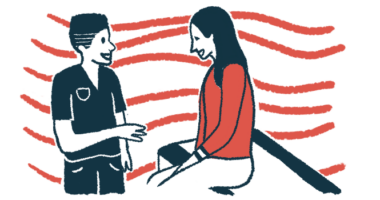Extra-renal Manifestations Occur Most Frequently in CNS of Children with aHUS, Study Reports

Extra-renal manifestations in children with atypical hemolytic uremic syndrome (aHUS) are most common in the central nervous system (CNS), a study has found.
According to the study, these neurological symptoms are associated with higher mortality and worse kidney function. The findings also revealed the beneficial effects of treatment with Soliris (eculizumab).
The study, “Extra-Renal manifestations of atypical hemolytic uremic syndrome in children,” was published in the journal Pediatric Nephrology.
aHUS is characterized by relapses, a high risk of permanent renal damage, and a dysregulated complement system — a set of more than 20 blood proteins that form part of the body’s immune defenses. About 60-70% of aHUS patients carry mutations in genes that provide instructions for making complement regulatory proteins.
Although the kidneys are the main target in patients with aHUS, the disorder may also affect the lungs, skin, CNS — brain and spinal cord — and the gastrointestinal tract.
However, few studies have assessed the frequency of these extra-renal manifestations in aHUS cases not secondary to infections or other conditions. These complications may occur both during or years after the acute phase of aHUS.
In this study, a research team from Turkey aimed to address this lack of information in children with aHUS and analyze their clinical and genetic characteristics as well as their prognosis and treatment outcomes. For this purpose, the investigators used data from the Turkish AHUS Registry, which includes 26 pediatric nephrology centers in the country.
A total of 70 children — 46 girls, ranging in age from 2 months to 17 years old (median age at diagnosis of 3.7 years) — with extra-renal manifestations were included, 31 of whom underwent genetic analysis. The children were evaluated annually by pediatric nephrologists for a median of 2.4 years. Three children had family history of aHUS.
All extra-renal manifestations were present at the initial presentation of aHUS. The most frequent type was CNS involvement, in 46 children (27.2%), followed by gastrointestinal in 20 (11.8%), cardiovascular in 12 (7%), and respiratory complications, also in 12 (7%).
Half of the patients with CNS manifestations and 65% of those with cardiovascular involvement had hypertension. The most common CNS complication was seizures, in 35 patients. Four of the children with CNS complications died during the acute phase of aHUS due to severe sepsis (two patients), respiratory failure, and cardiac failure (one each). Children with neurological involvement showed the highest mortality rate and the lowest estimated glomerular filtration rate — a marker of kidney function — at their last follow-up.
Of the 34 patients with neurological involvement, 18 showed abnormal findings on magnetic resonance imaging (MRI), which included increased signal intensity and signal changes due to hypertension.
These abnormal MRI scans were then categorized as secondary to thrombotic microangiopathies (TMAs) — blood clots in small blood vessels — or posterior reversible encephalopathy syndrome — characterized by headaches, confusion, seizures, and visual loss — which are both hallmarks of aHUS.
Respiratory issues were observed in 12 children and included respiratory failure, acute respiratory distress syndrome, pulmonary edema (swelling), and infiltration in the lung parenchyma — the portion of the lung involved in gas exchange.
Gastrointestinal involvement occurred in 20 children, with the most common complication being hemorrhage (five patients). Cardiovascular problems were noted in 12 children — dilated cardiomyopathy (heart muscle disease, in three cases) was the most frequent observation.
Nineteen children had multisystem involvement. As for treatment, 62% of the patients received renal replacement therapy, and 78% were treated with Soliris (by Alexion). Soliris, with or without plasma exchange, led to higher renal and hematologic recovery rates than not using this therapy, including in children with CNS manifestations.
Eleven children (35%) showed gene mutations, four in CFH, three in DGKE, two in C3, and one each in CFI and CFB. Mutations in all of these genes have been associated with aHUS. Six mutations were detected among children with CNS involvement, 3 in CFH, two in DGKE, and one in CFI. Treatment with Soliris was ineffective in children with a DGKE mutation, who all had proteinuria (protein in urine), renal failure, and TMA.
“The present findings might improve clinicians’ understanding of the extrarenal manifestations of aHUS and improve their ability to diagnose and initiate early treatment of such manifestations,” the scientists wrote.






